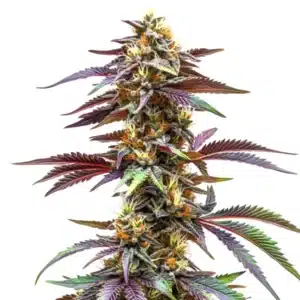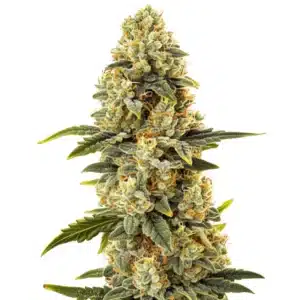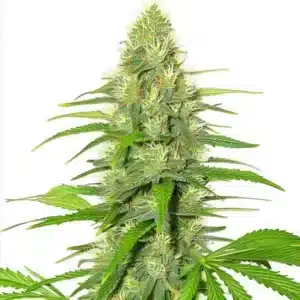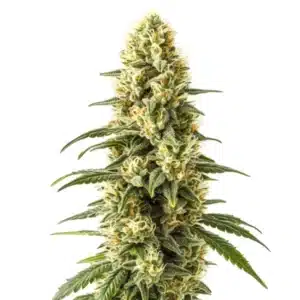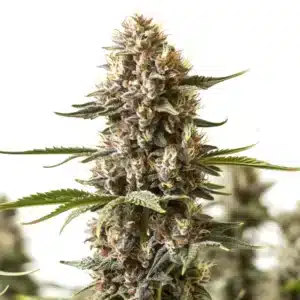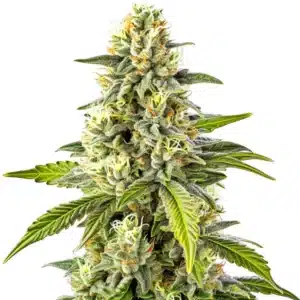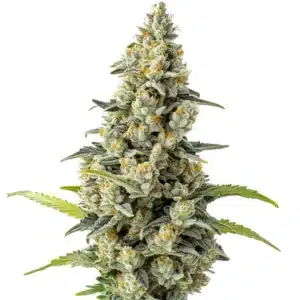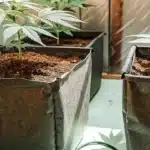
How Cannabis Uses Nitrogen
Cannabis, like all plants, has a need for nutrients. One of the key elements is nitrogen. Understanding how cannabis uses nitrogen is essential for growers, since this nutrient plays a significant role in plant development. It helps in the formation of amino acids, proteins, and chlorophyll. All these are crucial for healthy plants, and when nitrogen is supplied in the right amounts, cannabis thrives with vigorous growth and higher yields.
Nitrogen is vital during the vegetative stage. This is when plants grow rapidly. They need ample nitrogen to develop leaves and stems. Without enough nitrogen, cannabis plants may not reach their full potential. Managing nitrogen levels in cannabis cultivation is essential to ensure a bountiful harvest.
Recommended Strains
Blueberry
|
|
THC | 15% - 24% (Medium) |
|
|
Type | Feminized |
|
|
Yield | High |
|
|
Phenotype | 80% Indica / 20% Sativa |
Girl Scout Cookies
|
|
THC | 18% - 25% (Medium) |
|
|
Type | Feminized |
|
|
Yield | High |
|
|
Phenotype | 60% Indica / 40% Sativa |
When choosing cannabis seeds, consider strains like Pure Afghan from Blimburn Seeds. It’s known for its resilience and vigor. To support its growth, ensure you provide adequate nitrogen. This makes a noticeable difference in your overall yield.
How Cannabis Plants Absorb Nitrogen
Plants absorb nitrogen through their roots. This process involves taking up nitrogen from the soil. The form of nitrogen they absorb is usually nitrate or ammonium. These are water-soluble forms of nitrogen, making them easy for roots to take in.
Once absorbed, nitrogen moves to different parts of the plant. It becomes part of chlorophyll, the green pigment in plants. Chlorophyll is essential for photosynthesis. This process converts sunlight into energy for the plant. So, how cannabis plants absorb nitrogen directly impacts their ability to grow strong and healthy.
The efficiency with which cannabis plants absorb nitrogen can be influenced by soil pH. Maintaining a slightly acidic soil environment enhances nitrogen uptake. Growers often test and adjust pH levels to optimize this process and ensure plants receive the maximum benefit. Understanding how cannabis uses nitrogen is key, since it fuels chlorophyll production, supports strong vegetative growth, and lays the foundation for healthy yields.
Beyond soil pH, the presence of beneficial soil microbes also helps in the nitrogen absorption process. These microbes break down organic matter, releasing nitrogen in forms that are more accessible to plant roots. This symbiotic relationship highlights the importance of a healthy soil ecosystem in cannabis cultivation.
Nitrogen Deficiency Symptoms in Cannabis
Plants lacking nitrogen show clear signs. One of the first symptoms is yellowing leaves. This starts with the older leaves at the bottom of the plant. As the deficiency progresses, more leaves turn yellow. This can significantly reduce the plant’s growth.
Another symptom is stunted growth. Without enough nitrogen, plants can’t produce the proteins they need. This results in smaller plants with fewer branches. If you notice these signs, it’s crucial to address the nitrogen deficiency promptly.
Beyond yellowing leaves and stunted growth, nitrogen deficiency can also lead to a general decline in plant vigor. This includes weaker stems and a reduced ability to recover from environmental stressors. Addressing nitrogen deficiency symptoms in cannabis early can prevent these more severe issues.
To confirm a nitrogen deficiency, growers can conduct a leaf tissue test. This process provides an accurate assessment of nutrient levels within the plant, allowing for precise adjustments to nutrient regimens and ensuring how cannabis uses nitrogen is optimized for growth.
Promos & Deals
Nitrogen’s Role in Cannabis Growth
Nitrogen is a building block of life. In cannabis, it supports vigorous growth and development. During the vegetative stage, nitrogen is responsible for lush, green foliage. It’s also crucial for synthesizing amino acids. These are the building blocks of proteins.
Without sufficient nitrogen, cannabis growth stalls. Plants become weak and susceptible to pests. This is why managing nitrogen levels in cannabis cultivation is critical. Keep an eye on your plants and adjust nutrient levels as needed.
Knowing the nitrogen role in cannabis growth involves recognizing its impact on plant metabolism. Nitrogen is integral to the production of enzymes and hormones that regulate plant functions, ensuring robust and healthy development throughout the growth cycle.
Moreover, nitrogen is involved in the plant’s energy transfer processes. It plays a critical role in ATP synthesis, the energy currency of cells, which is vital for maintaining growth momentum and supporting the plant’s overall health and productivity.

Choosing Nitrogen-Rich Fertilizers for Cannabis
Fertilizers designed for cannabis often contain high nitrogen levels. Look for products with a higher first number in the N-P-K ratio, as this indicates a nitrogen-rich formula. These fertilizers are particularly beneficial during the vegetative phase, since understanding how cannabis uses nitrogen explains why it supports vigorous leaf and stem growth, stronger root systems, and overall plant health.
Organic options are also available. Consider using blood meal or fish emulsion. These provide a slow-release nitrogen source. They are great for maintaining consistent nutrient levels.
When selecting nitrogen-rich fertilizers for cannabis, consider the specific growth stage of your plants. During the early stages, fast-release nitrogen sources can provide the immediate nutrients required for rapid growth, while slow-release options are better suited for sustained nourishment.
Incorporating nitrogen-rich fertilizers into your cultivation routine should be done with precision. Regular soil testing can help determine the current nutrient status, allowing for informed decisions about the type and amount of fertilizer needed to support optimal growth.
Managing Nitrogen Levels in Cannabis Cultivation
Balancing nitrogen levels is key. Too much nitrogen can be as harmful as too little. Excess nitrogen leads to dark green leaves and delayed flowering. This is why monitoring your nutrient solution is essential.
Use a soil test kit to check nitrogen levels. These kits are easy to use and provide accurate results. Based on the readings, adjust your fertilizer regimen accordingly. Keep a record of your adjustments. This helps fine-tune your process over time.
Managing nitrogen levels in cannabis cultivation requires understanding the plant’s changing needs throughout its growth phases. During the transition from vegetative to flowering stages, adjusting nitrogen levels is crucial to encourage bud formation and overall plant productivity.
Besides soil testing, visual inspections of plant health can provide insights into nitrogen status. Observing leaf color, growth rate, and overall plant vigor can help growers make timely adjustments to their nutrient management practices, ensuring successful cultivation outcomes. Knowing how cannabis uses nitrogen also helps explain why deficiencies first appear as yellowing leaves and why balanced feeding is crucial for sustained growth.
Real-Life Examples of Nitrogen Management
Many growers have shared their experiences with nitrogen management. For instance, a grower using the Blueberry strain noticed improved yields. By closely monitoring nitrogen levels, they optimized plant growth.
Another grower working with the Girl Scout Cookies strain found success with organic fertilizers. They reported stronger plants and fewer pest issues. Choosing the right fertilizer makes a big difference.
In another scenario, a cultivator focusing on the White Widow strain achieved remarkable results by integrating compost tea into their nutrient regimen. This organic approach enriched the soil, improving how cannabis uses nitrogen and ultimately boosting plant resilience and yield.
These real-life examples underscore the importance of adopting a tailored approach to nitrogen management. By knowing the specific needs of different strains and growth environments, growers can make informed decisions that enhance plant health and maximize harvest potential.
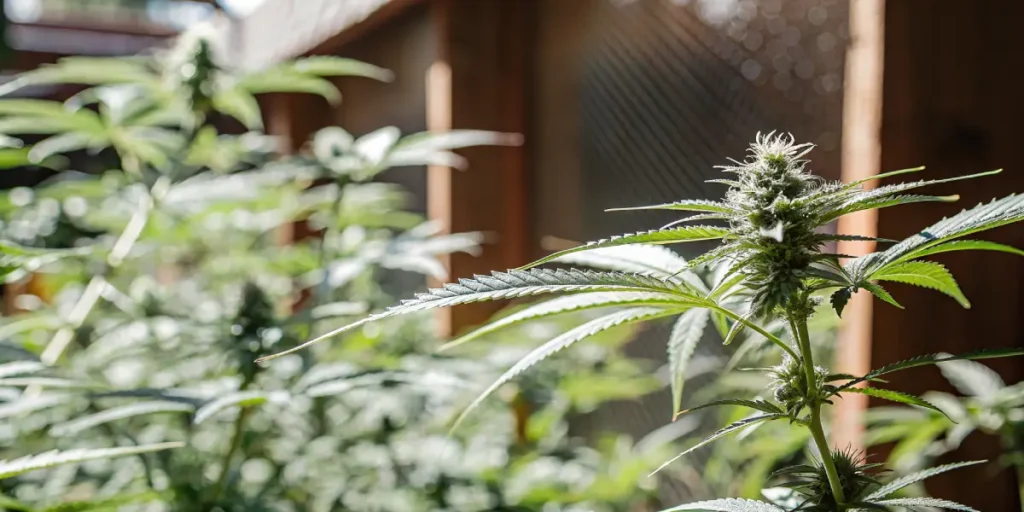
FAQs
What is the best way to ensure my cannabis plants get enough nitrogen?
To ensure your cannabis plants get enough nitrogen, start by using a balanced fertilizer. During the vegetative stage, opt for products with a higher nitrogen content. The N-P-K ratio on the label will guide you. Look for a higher first number, indicating more nitrogen. Knowing how cannabis uses nitrogen is essential, as this nutrient fuels leaf and stem development, supports photosynthesis, and drives overall plant growth.
Additionally, monitor your plants closely. Check for signs of nitrogen deficiency, such as yellowing leaves. Adjust your feeding schedule as necessary. A soil test kit can help you track nutrient levels accurately. With careful attention, you can maintain optimal nitrogen levels.
Incorporating regular soil amendments, such as compost or well-rotted manure, can also enhance nitrogen availability. These organic materials improve soil structure and microbial activity, further supporting how cannabis plants absorb nitrogen and other essential nutrients.
Strategically timing your nitrogen applications based on growth stages is also beneficial. During periods of rapid vegetative growth, increasing nitrogen levels can support robust foliage development, while reducing levels as plants transition to flowering can enhance bud production.
How can I identify nitrogen deficiency in my cannabis plants?
Identifying nitrogen deficiency is straightforward. The most common sign is yellowing leaves, starting with the older ones. As the deficiency worsens, more leaves will turn yellow. Stunted growth is another indicator. If your plants aren’t growing as expected, check for nitrogen deficiency symptoms in cannabis.
Regularly inspect your plants for these signs. Early detection allows for quick correction. Use a nitrogen-rich fertilizer to address deficiencies. This ensures your plants remain healthy and productive.
Another way to confirm nitrogen deficiency is by observing the leaf veins. In some cases, the veins may remain green while the rest of the leaf turns yellow, a condition known as chlorosis. Monitoring these symptoms can help diagnose and address nutrient imbalances effectively.
Implementing a routine of preventative care, such as scheduled nutrient applications and soil testing, can help avoid deficiencies. This proactive approach ensures that your cannabis plants consistently receive the nutrients they need for optimal growth and health.
Can too much nitrogen harm my cannabis plants?
Yes, too much nitrogen can harm cannabis plants. An excess leads to overly lush growth with dark green leaves. This might sound good, but it delays flowering. Plants focus on growing leaves instead of buds, affecting yield.
Over time, excess nitrogen can cause nutrient burn. This results in brown tips on leaves and can stunt growth. It’s essential to balance nutrient levels carefully. Regular flushing helps prevent the build-up of excess nutrients in the soil.
Excessive nitrogen levels can also lead to a condition known as “nitrogen toxicity,” characterized by curled leaf tips and a dark, almost glossy appearance. This can hinder plant growth and reduce the overall quality and quantity of the harvest.
To mitigate the risks associated with too much nitrogen, growers should maintain a careful balance of nutrients. Utilizing a well-rounded nutrient solution and adhering to recommended application rates can prevent over-fertilization and promote healthy plant development.
What are some organic sources of nitrogen for cannabis cultivation?
Organic sources of nitrogen include blood meal, fish emulsion, and composted manure. These provide a slow-release form of nitrogen. This is beneficial for maintaining steady nutrient levels. They are great alternatives to synthetic fertilizers.
Using organic sources can also improve soil health. They encourage beneficial microbial activity. This creates a thriving environment for your plants. Consider incorporating organic options into your nutrient regimen for sustainable cultivation.
Other organic nitrogen sources include alfalfa meal and bat guano. These materials not only supply nitrogen but also contribute additional nutrients and organic matter, enhancing soil fertility and supporting how cannabis plants absorb nitrogen effectively.
Incorporating cover crops, such as clover or legumes, into your cultivation system can also boost nitrogen levels naturally. These plants fix atmospheric nitrogen into the soil, providing a renewable and sustainable nitrogen source for cannabis plants.
How does nitrogen affect the flowering stage of cannabis?
During the flowering stage, nitrogen needs decrease. High nitrogen levels can delay flowering. Plants should focus on bud development rather than leaf growth. Reducing nitrogen and increasing phosphorus and potassium supports this transition.
Monitor nutrient levels closely as plants enter flowering. Adjust your nutrient solution to match this stage’s needs. This ensures your cannabis plants produce abundant, high-quality buds. Proper nutrient management throughout the growth cycle is key to success.
Transitioning from vegetative to flowering stages involves a careful nutrient adjustment. Lowering nitrogen while boosting phosphorus and potassium levels supports bud development, enhancing the overall yield and quality of the final product.
During the flowering phase, maintaining the right nutrient balance is crucial for resin production and terpene development, which contribute to the potency and aroma of cannabis. This highlights the importance of knowing nitrogen’s role in cannabis growth and adjusting nutrient levels accordingly.





